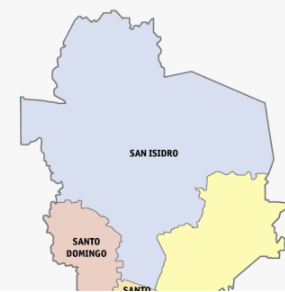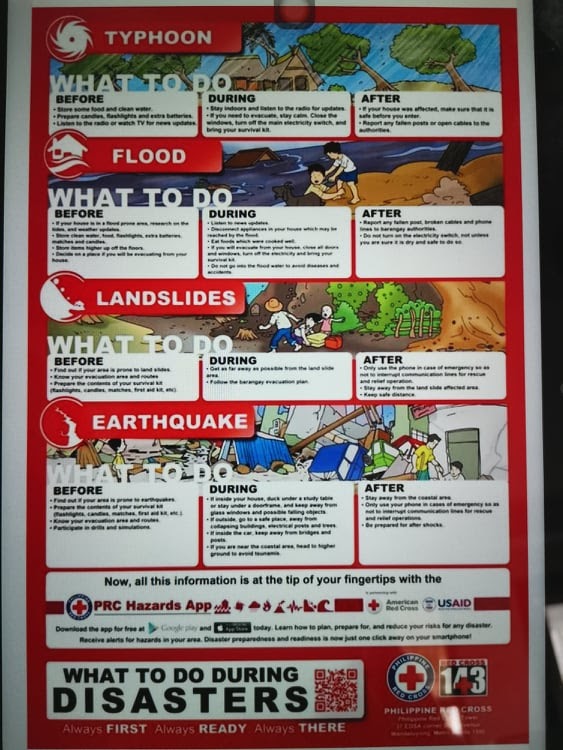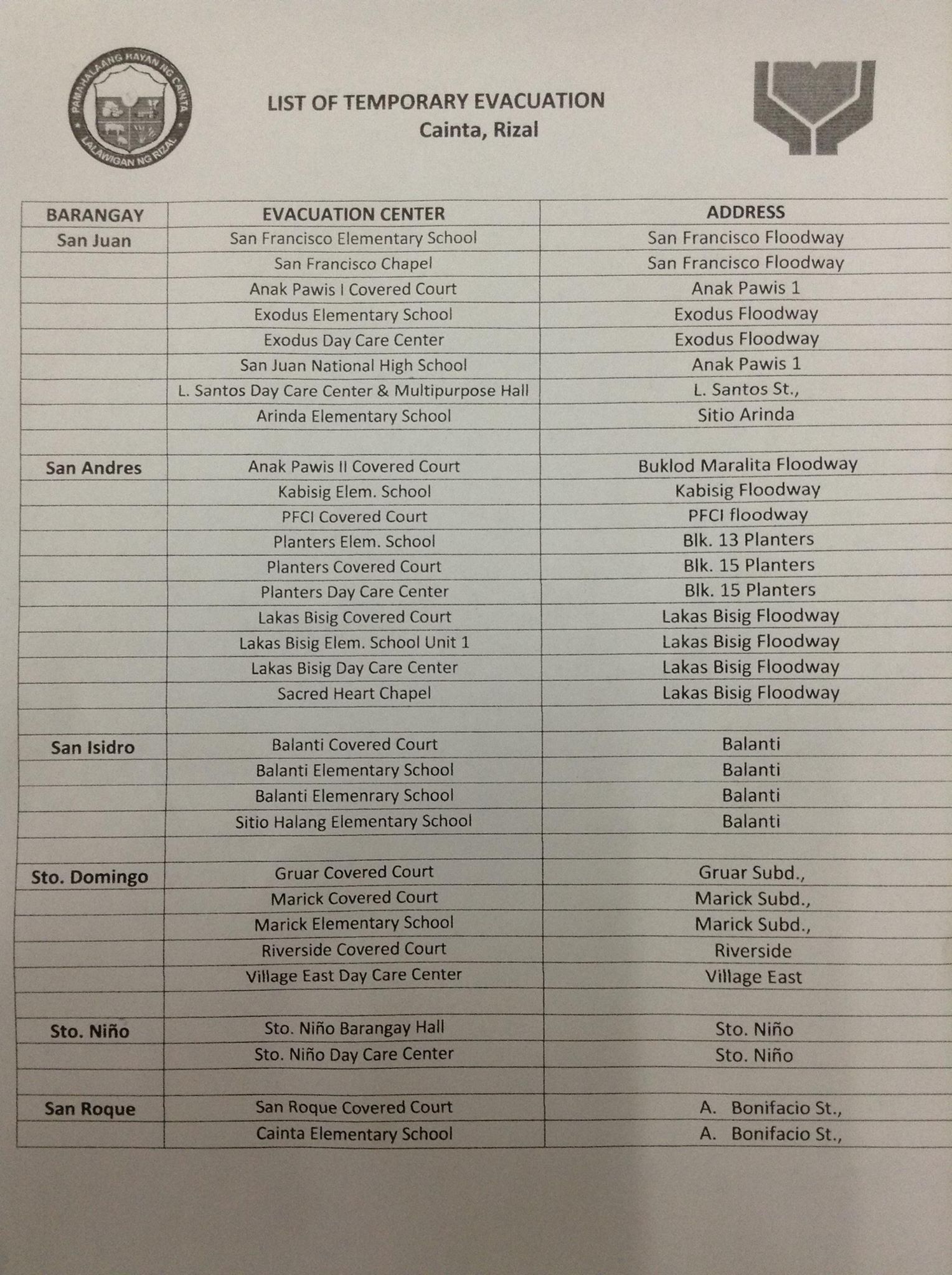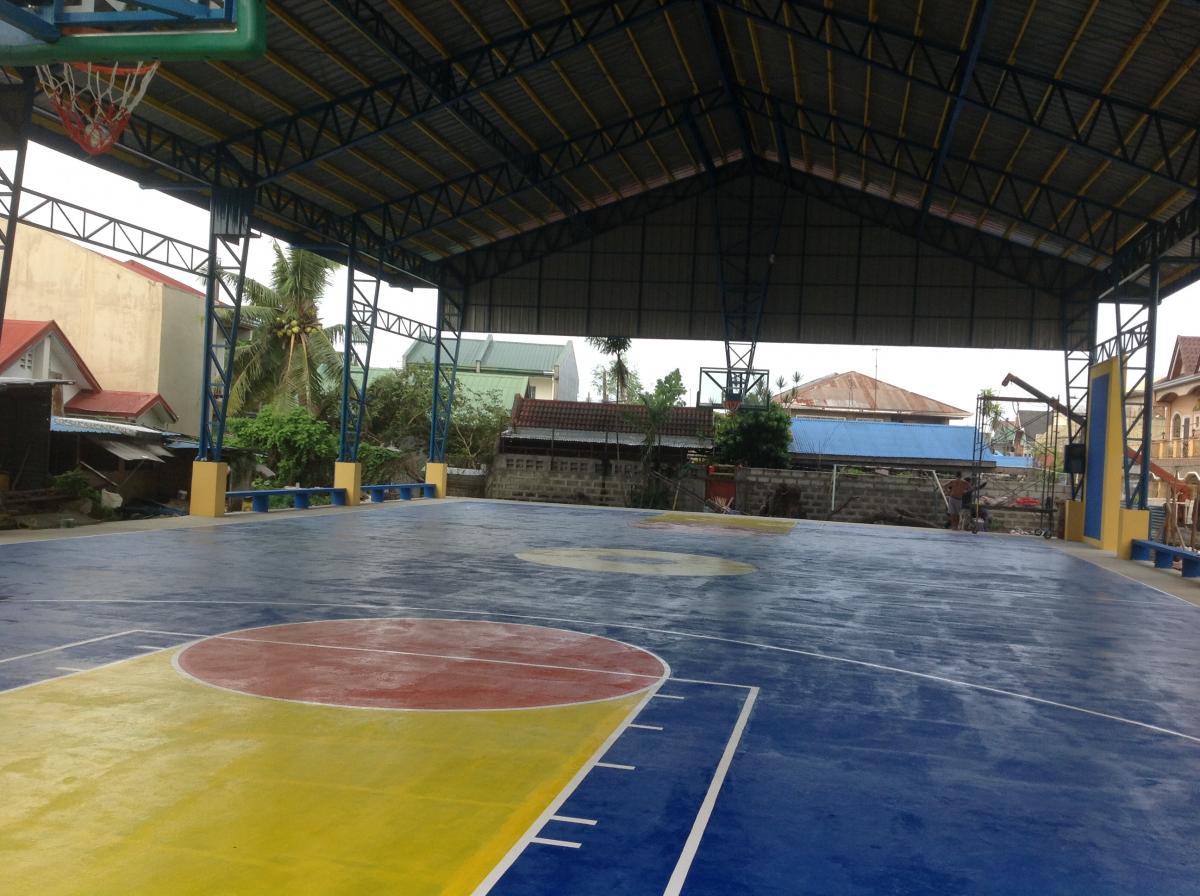Natural as well as man-made calamities are inevitable, worldwide.
Thus, every community must be equipped with emergency response preparedness (ERPP) to address the immediate needs of its constituents and as prevention from further damage to lives and properties.
The Philippines is a vulnerable country, especially to typhoons and earthquakes. Our country experiences typhoons four times or more in one year. And super typhoon Yolanda (Haiyan)has taught our government a lesson about the importance of having a good emergency preparedness plan (ERPP) to cater to the needs of the constituents before, during, and after a disaster.
The Philippines’ geographic location combined with the poor infrastructure and widespread incidence of poverty makes it highly vulnerable to risks. Filipinos are exposed to risks related to volcanic eruptions, earthquakes, health hazards, forest fires, typhoons, floods, and more. While these do not happen every day, the reality is that they do happen. And when they do. governments, particularly LGUs should be prepared.
Cainta Rizal is one of the municipalities that are flood-prime caused by typhoons or continuous rainfalls. It is a first-class municipality in the province of Rizal with seven relatively large barangays namely; San Andres, San Juan, San Isidro, San Roque, Sto Domingo, Sta Rosa, and Sto Nino.

The town is located directly south of the flood-prone marikina city and is adjacent (adjacent: next to or adjoining something else.) to the first-class city of Pasig in metro manila.
Due to its proximity to highly urbanized metro manila, widespread and uncontrolled urban growth development. The once agricultural village of vast rice fields had become a hub of industrial, highly urbanized commercial establishment, and residential subdivisions(one Cainta website 2014)
Brgy. San Isidro, Cainta, Rizal in particular, is the largest land area and is the third most populous barangays situated in the western part bounded by the city of Antipolo in the east, marikina in the north, and Pasig city in the south.

It has a land area of 2,158,90 hectares. its population is 69,377, 21.54% of the total population in Cainta. The barangay hotlines are as follows:
Emergency : # 656 - 3206
Hotline : # 248 - 2290
Landline : # +63(2)8 - 681 - 8982
Of its population, its highest constitute the age group of 20 - 24, 6,897 individuals while its lowest constitute the age group of 80 and over, 488 individuals.
The coronavirus or Covid-19 has disturbed the lives of humankind and it continues to affect the people, the business, the government, the church, and everything in us, everything around us.
The truth is COVID-19 has brought people all over the world into a panic that and medical experts feared with the overwhelming positive cases and deaths. All nations the world over were caught unaware and were not ready nor prepared to face the situation unlike other crises or disasters e.g typhoons, floods, earthquakes, fire, etc.
Over a year now that the COVID-19 pandemic started, the netizens, the government, and other institutions have learned to line with the virus by adopting health protocols and emergency response plans to ensure everybody’s safety and well-being.
A 2010 census of the national government in Rizal reveals that Cainta is the second most populated town with 311,845 people (PhilippinesStatistics Authority, 2013) and has the highest density of 10,811 persons per square kilometer (Rizal Provincial Development and Physical Framework Plan 2008 - 2013)
Based on the geohazard map produced by the Mines and Geosciences Bureau of the department of environment and natural resources, Cainta is naturally susceptible to flash floods and flooding of as high as one meter for several hours during heavy rains due to its landforms of typographic lows which include active miner channels, abandoned river channel, and areas along river banks. Cainta’s topographic form makes it an unfortunate catch basin of floodwaters coming from other nearby mountainous towns of Rizal.
In the years 2009, 2011, 2013 and 2014 Cainta’s residents experienced the greatest scare of their lives as they watched their house submerged in waters brought about by typhoons Ondoy, Sendong, Maring, and Mario.
Over the past several years, the government of Cainta learned that their flood risk management needs to be improved wherein 2014 some 5,300 families were affected and gatherers in 23 evacuation centers (Nieto 2014).

The government realized that for at his time, the local government made heavy use of social media, particularly Facebook (FB), for its flood risk management system. The town mayor himself is convinced that the social medium is “the best tool” he could use to bring him closer to the people (Nieto 2014). He maintains four accounts with a total of 13,621 friends and a total of 34,368 followers for his two FB pages as of Nov 21, 2014.
The residents of Cainta are now well informed of government updates using social media which include Brgy San Isidro and other barangays. Social Media allowed emergency management to utilize networked individuals to function as refined nodes of information of a bigger and more organized risk management communication program (Grieb in white 2012).
In Cainta, social media played a significant role in its flood risk management efforts. Residents were forewarned of impending risks, the community responded by providing information from the ground while the government did its job of constantly providing updates. In times of crisis, there is a need for the LGUs to trust the wisdom of the crowd for they are the ones who are at risk and will benefit from effective solutions.
During emergencies, it pays to be prepared. Cainta, Rizal in general and Brgy. San Isidro in particular follows a strict emergency plan which they have formulated.

Responsible barangay officials committees and teams have been identified to handle different emergency tasks that are ready to move and address crises in the community. Volunteerism and Bayanihan always come in handy as well.
Materials and equipment for the search and rescue team are in place. The public address system, megaphones, sirens, and other necessities are available to caution the residents as part of its communication strategy.

Prepositioning and stockpiling of rice are stored in safe and dry places. Food, water, and nonfood essentials are packed days before an emergency strikes. Provisions for these interns are ready even for several days or weeks and as needed. First aid kits, batteries, and whistles are also important items considered.
Non-prescription medicines are also available as well as milk, diapers (For infants and adults) alcohol, and other health essentials are all available.
Transportation facilities (i.g rubber boats, trucks, ambulance, ETC.) will be visible on accessible roads. General services operations are well informed and well trained for their trucks.
A mitigation map was developed as LGUs plan to rehabilitate through dredging some portions of the river banks and water system. The drainage system was also for an easy flow of water.
Also, a communication map is being developed corresponding to the early warning system information dissemination, pre-emptive evacuation, and actual operation during typhoon and flooding incidents.
A group of barangay officials is assigned to prepare requests that they should make to the municipal, provincial, and national government for public assistance, and find evacuation centers that are safe and easy to access or easy to locate. People have been assigned to tackle their tasks like lead the residents affected to evacuate quickly to a safer place; saving children and seniors, and supporting residents in getting back to normal life.
Please contact your local barangay or contect hotlines like:
National Emergency Hotline in the Philippines : 911
Philippine National Police Hotline: 117 or (02) 8722-0650
Philippine Red Cross: 143 or (02) 8527-8385 to 95
Bureau of Fire Protection: (02) 8426-0219 or (02) 8426-3812
They have identified critical routes like bridges, tunnels, train tunnels, ETC in communication centers and areas for rehabilitation as part of its preparedness strategies.
Readiness in preparing for the safety and health of the residents of Brgy. San Isidro, Cainta, Rizal, many face masks, face shields, alcohol, and disinfectants have been stocked for easy access. Health protocols are strictly observed as imposed nationwide.
Effective contract tracing has been implemented and quarantines are being followed. Relief goods and financial assistance have been approved in case of a lockdown. Contract tracers were hired for immediate contract tracing.
A list of qualified residents has been identified as priorities in the administration of vaccines. First in the priorities are the front liners and senior citizens to be followed by the other residents.
The barangay has many tents that will be utilized as additional isolation facilities for COVID-19 patients. Vehicles have plastic shields for proper distancing.
Lastly, everyone should not forget our duties and responsibilities as our help to our community, children should help their parents evacuate, help pack the emergency kits, parents should find exit routes for evacuation, find safe places to stay before and after the disaster, and help children evacuate.
Responding to people during and after emergencies is the most challenging and humbling task ever. But the service to people is a service to God.
Provisions are now distributed to the victims in several evacuation centers


Balanti court
in the barangay like food, water, mats, items of clothing, toiletries, and other basic needs. Injured victims are taken care of while those with health problems are being attended to. While those who need medical attention are brought to nearby hospitals immediately.
People who are detected with COVID - 19 symptoms are immediately brought to isolation facilities. Everyone inside the evacuation centers is instructed to observe health protocols like wearing face masks, use alcohol and sanitizers, and avoid exchanging conversation since social distancing is unavoidable in a crowded environment.
The search and rescue teams are deployed to save lives as its priority and brought to safe grounds. Other teams are on their way to assess the estimated number of affected residents, casualties, damaged houses, properties, infrastructures, roads, and the like for reporting and immediate disposition. Missing and death casualties are monitored and their casualties will be brought to nearby morgues soonest possible.
Last year, Brgy. San Isidro distributed many face masks, face shields, alcohol, and disinfectants to residents. When Cainta was under the Enhanced Community Quarantine (ECQ) and lockdown, relief goods, and financial assistance were given as mitigation measures.
Proper health protocols were strictly observed by medical workers and frontliners including the wearing of PPE. It also adopted a contingent emergency response component (CERC) which supports an immediate response to health emergencies.
Cainta, Rizal provided mental health and psychological support to the medical health workers, front liners, and the victims of COVID-19 to cope up with depression and anxiety.
The 300,000,000.00 million budget for the recovery plan will be spent on a site restoration plan, community recovery plan, support and services assistance, and other priorities at hand.
Construction materials are readily available for the construction of temporary shelters of those identified displaced residents who will be relocated to safe higher grounds. Some affected residents will be given financial assistance from the government for the repair of their damaged houses.
Senior citizens will be given special medical assistance in the hospitals including residents who are injured and need further medical attention. COVID-19 patients are given their needed medication and protection until recovered. Vaccination should be administered to all.
Damaged drainage, seawalls, electricity, and water will be cleaned, repaired, and put into power in the soonest possible time. Responsible agencies or offices to put the electric power back and supply potable drinking water to be accessible to the residents.
Major repair and rehabilitation of damaged infrastructure take a longer time and hard work. Seeking assistance from the municipal, provincial and national government is underway for a speedy recovery. Their help is necessary because for as long as the national government is not able to come up with a grand project to spare Cainta from floods, residents will always have to live the reality that anytime flashes floods and massive and prolonged flooding will hit them. And for as long as the people remain complacent and refuse to cooperate with the government in observing health protocols, the COVID-19 pandemic will not be curved down putting the lives of our people at risk and in danger.
Coping with emergencies is no easy job. And attending to the needs of many people is hard and very challenging.
Complete and careful preparation must be made to properly address any kind of emergency that comes along. A well-prepared individual, leaders, residents, and the community as a whole will measure its success in responding to emergencies/disasters.
Proper coordination and cooperation of everyone involved are necessary for achieving the goals for the safety and well-being of all concerned. The budgetary issue must be resolved because funds are needed for the implementation of plans, policies, and programs of the government.
Since all-natural disasters are inevitable, a well-prepared emergency response plan matters a lot. This will save the lives and properties of every Juan.